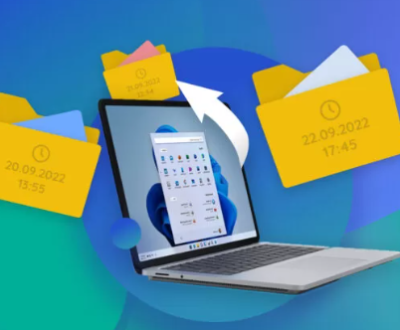USB memory sticks have become a popular choice for storing and transferring data due to their portability and ease of use. However, loss of files can occur for various reasons: accidental deletion, formatting, corruption, or even physical damage. Fortunately, there are several methods to recover lost files from a USB memory stick.
USB Memory Stick File Systems
Before diving into recovery methods, it’s essential to understand the file systems used by USB memory sticks. Most USB drives are formatted with one of the following file systems:
FAT32: Widely compatible but has a 4GB file size limit.
exFAT: Suitable for larger files and compatible with many devices.
NTFS: Supports larger files and advanced features like encryption but may not be compatible with all devices.

Knowing the file system of your USB drive can influence the recovery process.
Common Causes of Data Loss on USB Drives
Understanding the potential causes of data loss can help you avoid future mishaps. Here are some common scenarios:
Accidental Deletion: Files can be accidentally deleted by the user.
Formatting: If you format your USB drive without backing up data, you may lose all files.
Corruption: Improper ejection or malware can corrupt the file system.
Physical Damage: Dropping the drive or exposure to water can lead to data loss.
Initial Steps to Take After Data Loss
If you find yourself in a situation where files are missing from your USB drive, follow these initial steps:
Stop Using the Drive: Continuing to use the USB stick may overwrite the deleted files, making recovery difficult.
Check Recycle Bin: If files were deleted, they might still be in your computer’s Recycle Bin.
Try Different Ports/Devices: Sometimes, the issue may lie with the USB port or the device. Try accessing the drive on another computer.
Using Built-in Recovery Tools
Windows File History
If you use Windows and have File History enabled, you might be able to recover lost files:
Connect your USB drive.
Search for the file in File Explorer.
Right-click the folder where the file was stored and select “Restore previous versions.”
Choose a version to restore and click “Restore.”
Mac Time Machine
If you’re on a Mac and use Time Machine, follow these steps:
Connect the USB drive.
Open the folder where the lost file was stored.
Click the Time Machine icon in the menu bar and select “Enter Time Machine.”
Browse through the backups to find the lost file, then click “Restore.”
Third-Party Data Recovery Software
1. Panda Assistant
Panda Assistant is an innovative data recovery software designed to help users effortlessly recover lost or deleted files from various storage devices, including USB drives, SD cards, and external hard drives. With its intuitive interface, Panda Assistant is accessible to both beginners and experienced users, simplifying the recovery process.
The software utilizes advanced scanning algorithms that thoroughly search for recoverable files, even after formatting or corruption. Users can preview files before recovery, ensuring they retrieve the exact documents, images, videos, or audio files they need. Panda Assistant supports a wide range of file types, making it versatile for different recovery scenarios.
2. EaseUS Data Recovery Wizard
EaseUS Data Recovery Wizard is a powerful recovery tool that supports various file types and file systems:
Download and install EaseUS Data Recovery Wizard.
Launch the software and connect your USB drive.
Select the USB drive from the list of available drives.
Click “Scan” to initiate the recovery process.
Review the scan results and select the files you wish to recover.
Click “Recover” to restore the files.
3. Disk Drill
Disk Drill is another robust recovery tool that offers a free version with limited recovery capabilities:
Download and install Disk Drill.
Connect your USB drive to your computer.
Open Disk Drill and select the USB drive.
Click “Search for lost data.”
Review the found files and select those to recover.
Click “Recover” and choose a location to save the recovered files.
Advanced Recovery Techniques
If the previous methods do not yield results, you may need to consider more advanced recovery techniques.
1. Command Prompt (Windows)
Using the Command Prompt can help recover lost files from a corrupted USB drive:
Connect the USB drive to your computer.
Open Command Prompt as an administrator.
Type the following command and press Enter:
chkdsk X: /f
(Replace X: with the letter assigned to your USB drive.)
The command will check for errors and attempt to fix them.
2. Professional Data Recovery Services
If the files are critical and cannot be recovered using software, consider seeking professional data recovery services. These services can be expensive, but they often have specialized tools and expertise to recover data from physically damaged drives.
Best Practices to Prevent Data Loss
To minimize the chances of data loss in the future, consider the following best practices:
Regular Backups: Regularly back up important files to another drive or cloud storage.
Safe Ejection: Always safely eject the USB drive before removing it from your computer.
Use Antivirus Software: Keep your devices protected against malware that can corrupt files.
Check File Integrity: Periodically check your USB drive for errors using built-in tools or third-party software.
About us and this blog
Panda Assistant is built on the latest data recovery algorithms, ensuring that no file is too damaged, too lost, or too corrupted to be recovered.
Request a free quote
We believe that data recovery shouldn’t be a daunting task. That’s why we’ve designed Panda Assistant to be as easy to use as it is powerful. With a few clicks, you can initiate a scan, preview recoverable files, and restore your data all within a matter of minutes.
Subscribe to our newsletter!
More from our blog
See all postsRecent Posts
- How to restore deleted images 2025-06-30
- How to restore a deleted file on windows 2025-06-30
- is there any way to restore deleted photos 2025-06-30

 Try lt Free
Try lt Free Recovery success rate of up to
Recovery success rate of up to









